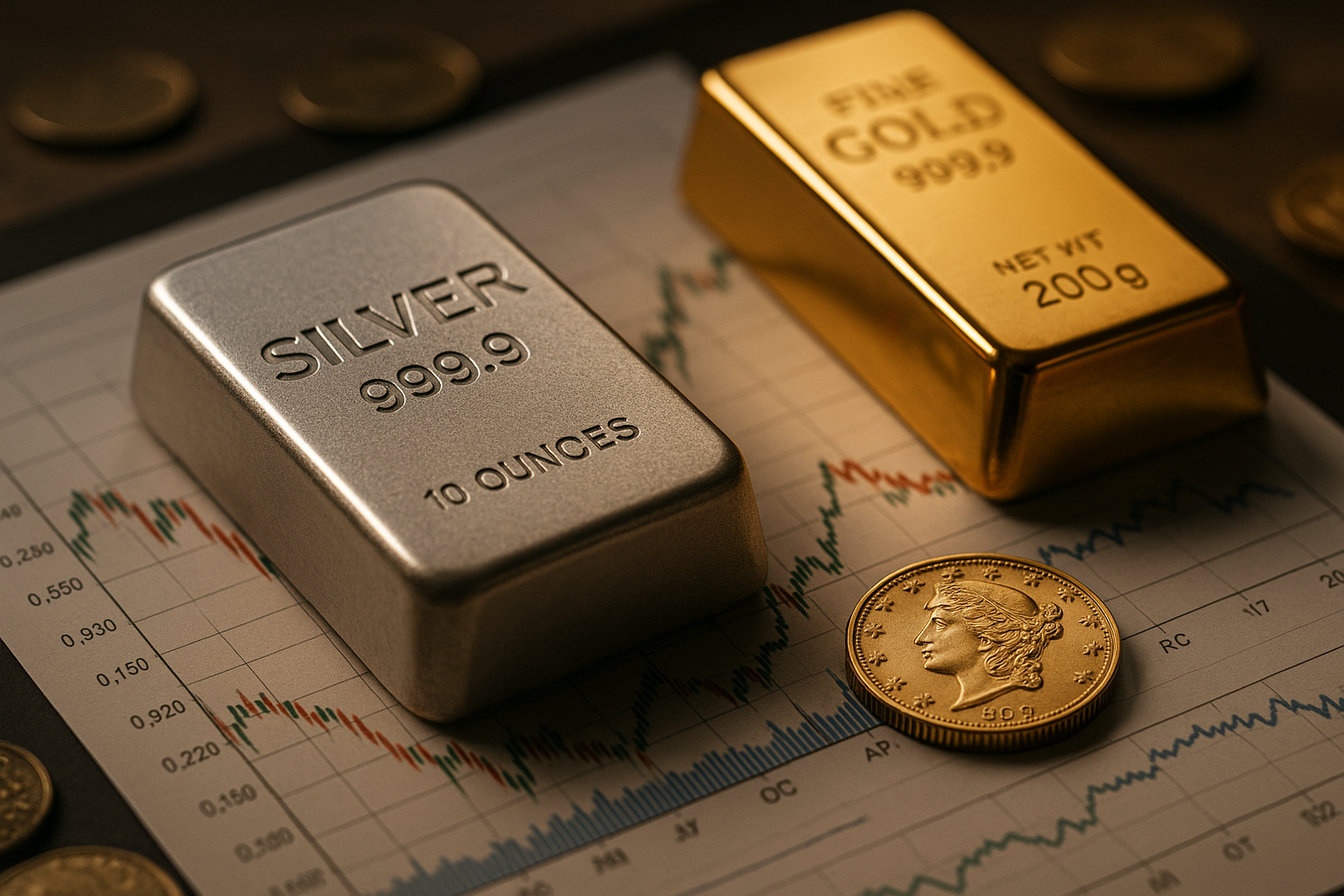Why Gold Is Considered a Good Investment
Gold has long been regarded as one of the most stable and trusted forms of investment. As currencies fluctuate and markets shift, many investors turn to gold for its reputation as a safe-haven investment — a way to preserve value even during times of financial instability, and long-term growth. Furthermore, gold is a highly liquid asset, meaning it can be quickly converted into cash when needed.

Gold has captivated humanity for millennia, not only for its beauty but also for its intrinsic value as a financial asset. Unlike paper currencies or digital investments, gold represents a physical commodity with universal recognition and acceptance. Throughout history, civilizations have used gold as currency, stored it as wealth, and relied on it during economic crises. Today, modern investors continue to view gold as a strategic component of diversified portfolios, offering unique advantages that other assets cannot replicate.
What Are the Key Benefits of Investing in Gold?
Gold provides several compelling advantages that make it attractive to investors across different risk profiles. First, it serves as an effective hedge against inflation. When the purchasing power of currency declines, gold prices typically rise, preserving wealth over time. Second, gold demonstrates low correlation with stocks and bonds, meaning it often moves independently of traditional financial markets. This characteristic makes it valuable for portfolio diversification, potentially reducing overall investment risk.
Additionally, gold offers liquidity that few other physical assets can match. You can sell gold quickly in markets worldwide, converting it to cash when needed. The precious metal also provides protection during geopolitical uncertainty and economic downturns, as investors flock to safe-haven assets during turbulent times. Unlike companies that can go bankrupt or currencies that can collapse, gold maintains inherent value regardless of political or economic conditions.
What Insights Should Investors Understand About Gold Markets?
Successful gold investing requires understanding the factors that influence prices. Central bank policies play a significant role, as interest rate decisions and monetary expansion directly impact gold’s attractiveness. When interest rates remain low, the opportunity cost of holding non-yielding gold decreases, often driving prices higher. Currency fluctuations also matter, particularly movements in the US dollar, as gold typically trades inversely to dollar strength.
Supply and demand dynamics affect gold prices as well. Mining production, jewelry demand, industrial applications, and investment demand all contribute to market movements. Geopolitical tensions, trade disputes, and economic uncertainty can trigger sudden surges in gold buying as investors seek stability. Understanding these market forces helps investors time their purchases and sales more effectively, though predicting short-term price movements remains challenging even for experienced professionals.
What Costs Are Associated With Gold Investment?
Investing in gold involves various costs that differ depending on your chosen method. Physical gold purchases include premiums above the spot price, typically ranging from 3% to 10% for coins and bars. Storage costs add another expense, whether you choose home safes, bank safety deposit boxes, or professional vault services. Insurance for physical gold can cost between 0.5% and 2% of the gold’s value annually.
Gold exchange-traded funds (ETFs) offer lower entry costs, with expense ratios typically between 0.17% and 0.40% annually. Gold mining stocks and mutual funds carry management fees ranging from 0.50% to 1.50% or higher. Transaction costs, including brokerage commissions and bid-ask spreads, also impact overall returns. Understanding these expenses helps investors calculate their true net returns and choose the most cost-effective investment vehicles for their situations.
| Investment Type | Provider/Option | Cost Estimation |
|---|---|---|
| Physical Gold Coins | US Mint, APMEX, JM Bullion | 3-8% premium over spot price |
| Gold Bars | PAMP Suisse, Credit Suisse | 2-5% premium over spot price |
| Gold ETFs | SPDR Gold Shares (GLD), iShares Gold Trust (IAU) | 0.17-0.40% annual expense ratio |
| Gold Mining Stocks | Newmont Corporation, Barrick Gold | Standard brokerage commissions |
| Gold IRAs | Birch Gold Group, Augusta Precious Metals | Setup fees $50-200, storage $100-300/year |
Prices, rates, or cost estimates mentioned in this article are based on the latest available information but may change over time. Independent research is advised before making financial decisions.
How Can You Access Gold Investment Opportunities in Your Area?
Gold investment options are widely accessible to investors throughout the United States. Local coin shops and precious metals dealers offer physical gold purchases, allowing you to inspect products before buying. These establishments typically provide various options, from small fractional coins to larger bars, accommodating different budget levels and investment goals.
Online dealers have expanded access significantly, offering competitive pricing and convenient delivery to your location. Reputable online platforms provide authentication guarantees and secure shipping options. For those preferring paper gold investments, brokerage accounts accessible from anywhere enable purchases of gold ETFs, mining stocks, and mutual funds. Banks in most communities offer safety deposit boxes for secure storage, while specialized vault services operate in major metropolitan areas. This widespread availability means investors can build gold positions regardless of their geographic location within the country.
What Different Forms of Gold Investment Exist?
Investors can choose from multiple gold investment vehicles, each with distinct characteristics. Physical gold, including coins and bars, provides direct ownership and tangible security. Popular coins include American Gold Eagles, Canadian Maple Leafs, and South African Krugerrands. Gold jewelry serves dual purposes as adornment and investment, though markups for craftsmanship reduce its investment efficiency.
Gold ETFs and mutual funds offer convenient exposure without physical storage concerns. These securities track gold prices and trade like stocks, providing liquidity and ease of management. Gold mining stocks represent indirect gold investment, offering potential leverage to gold price movements but carrying additional company-specific risks. Gold futures and options suit sophisticated investors comfortable with derivatives and margin requirements. Digital gold platforms have emerged recently, allowing fractional ownership through mobile applications. Each format presents unique advantages and considerations regarding costs, liquidity, storage, and risk profiles.
How Does Gold Fit Into a Balanced Investment Strategy?
Financial advisors typically recommend allocating between 5% and 15% of investment portfolios to gold, though optimal percentages vary based on individual circumstances. Gold’s role centers on diversification and risk management rather than aggressive growth. During stock market corrections, gold often maintains or increases value, cushioning portfolio declines. This negative correlation with equities provides stability during volatile periods.
Younger investors with longer time horizons might allocate smaller percentages to gold, emphasizing growth-oriented assets instead. Those approaching retirement or seeking capital preservation often increase gold holdings for added security. Market conditions also influence appropriate allocation levels. During periods of high inflation expectations, currency devaluation concerns, or geopolitical instability, temporarily increasing gold exposure may prove prudent. Regularly rebalancing ensures gold maintains its intended portfolio role without becoming over or underweighted relative to investment objectives.
Gold’s enduring value stems from its unique combination of scarcity, durability, universal acceptance, and historical significance. While it generates no income through dividends or interest, its wealth preservation characteristics and portfolio diversification benefits make it a cornerstone asset for many investors. Whether you choose physical gold, ETFs, or mining stocks, understanding the costs, market dynamics, and strategic role of gold helps you incorporate this precious metal effectively into your financial plan. As with any investment, thorough research and consideration of personal financial goals remain essential before committing capital to gold.




